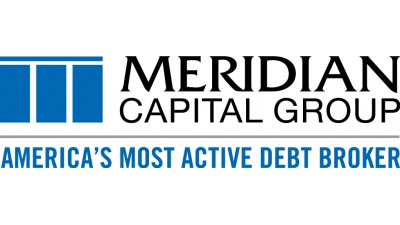What 2017 Will Bring For The CRE Market
From a decreased appetite for financing construction developments to a recent rise in interest rates, 2016 affected property markets throughout the country. Financing and investment sales firms have adapted to these new trends, digging even deeper on the assignments they decide to underwrite. Drew Anderman and Ronnie Levine, senior managing directors at Meridian Capital Group, and Helen Hwang, senior executive managing director at Meridian Investment Sales, sat down with Bisnow to discuss how 2017 will look from the debt capital markets and investment sales perspective.
Bisnow: Was 2016 a challenging year for Meridian and the larger CRE industry?

Levine: Despite a challenging landscape Meridian closed high-profile assignments ranging from large ground-up construction projects to acquisition loans on Class-A office buildings. When the CMBS markets were volatile, we were successfully able to navigate our deals to life insurance companies and balance sheet lenders. When liquidity became constrained in the construction lending sector, we were able to tap into non-bank lenders to fill the void.
Anderman: The most challenging — and most interesting — market for us was construction. Lenders have cut back, starting last year, on their exposure to construction loans. There’s not as much money in that market right now, especially for condominium developments. We are working on a couple of deals now and we’ll be successful in securing financing for clients in this category.
Hwang: It was Meridian Investment Sales' first full year as a new division of the company, and we sold $2B in properties in our inaugural year. I think that is more than anyone could have asked for in year one for a brand-new business. Meridian has also given us access to a capital base that in the past has proven to be difficult to tap into: particularly family-run offices and 1031 exchange investors. Nearly 25% of our sales volume last year came from buyers executing 1031 exchange requirements. For CRE overall, the year was mixed, but generally good. Manhattan transaction volume was down approximately 25% to 30%, but in the context of history, the borough still experienced one of the most active years on record.
Bisnow: Do you see rising interests rates affecting the marketplace in 2017?

Levine: Rising rates definitely present challenges for financing — especially on deals where the loan is sized to a cash flow coverage. As rates increase, many lenders needed to lower their loan amounts to maintain compliance with debt yield and DSCR constraints. I think the bigger challenge for the market is volatility and unpredictability.
Anderman: That being said, rates are still very low compared to what they have been historically, and there’s still plenty of money available. Overall, I don’t think we see a meaningful impact on the financing business; it’s felt more on the development and construction side, where things just take longer and [fewer] deals are getting done.
Hwang: We’ve been talking about the interest rate hike for a while now, and only since the election does it appear to be a reality. Increasing rates as it impacts pricing is certainly a concern, maybe more for core-plus transactions than for true core — low leverage or no leverage — than for value-add transactions. Rates are definitely something that will impact underwriting for investors and lenders. However, we have to remember that we’re still in a historically low interest rate environment.
Bisnow: Where do you see the most opportunity in the lending marketplace?

Anderman: Nationally, multifamily is still going to remain strong, and I think CMBS will remain strong. Overall, the financing market will be healthy like it was in 2016. Alternative sources of capital — meaning debt funds — will also play an active role, and insurance companies are still going to do a lot of business lending on higher-quality and lower-leverage assets. All of the lenders we talk to, across all of the disciplines and platforms, are looking and working to have a big year in 2017.
Hwang: In NYC, where I spend the majority of my time, FiDi looks like it will be a heavy target market for investors. The combination of new transportation infrastructure and a rapidly growing residential population is really driving the interest. Investors are also focused on Hudson Yards and the Far West Side. There's also Mott Haven and the South Bronx. We’ve heard rumblings about investors venturing into the South Bronx for several years and the market has gotten past the early adopter stage and now institutional firms are starting to make the jump.
Levine: I think there are still opportunities in all of the major markets. Location is obviously one of the most important factors to be considered. However, lenders are equally as focused on other deal attributes, such as the quality and experience of sponsorship, loan basis or leverage, and quality of the tenancy.

To learn more about this Bisnow content partner, click here.

